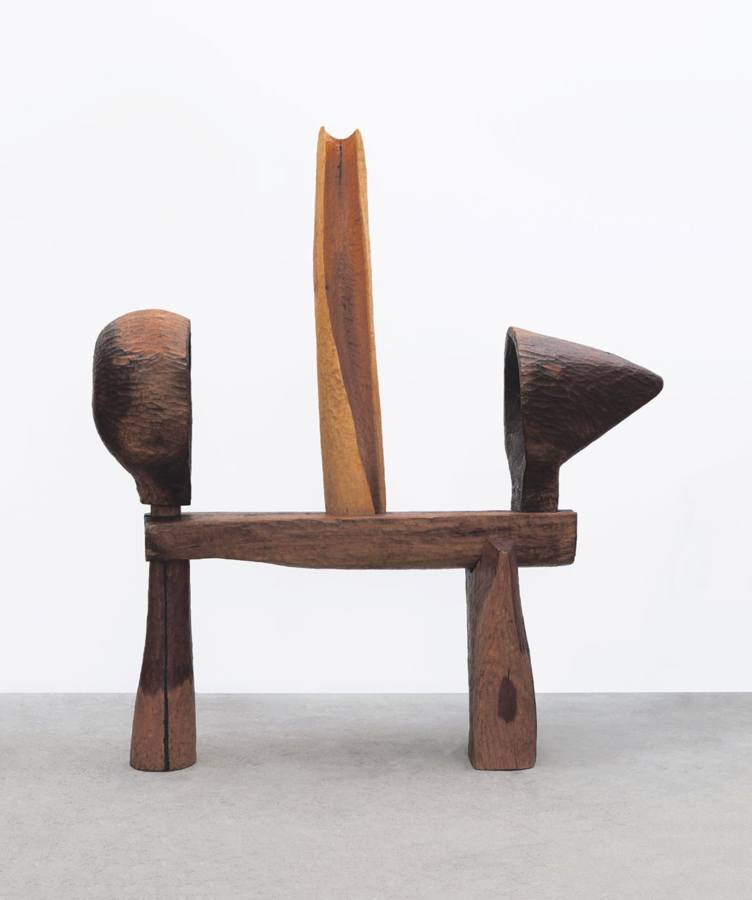May 28, 2020
Download as PDF
View on Bookforum
The titles of Thaddeus Mosley’s recent wood sculptures are often plainly descriptive: There’s a curve in Curved Closure, branches in Branched Form, and an oval in Oval Continuity. This straightforward denotation of the works’ spatial and geometric character indicates Mosley’s matter-of-fact approach. At ninety-four, the self-taught artist isn’t inclined toward mystification or obscurity. In an essay by curator Brett Littman, included in this volume, Mosley recounts how in the 1950s he saw “decorative furniture with details like small birds and fish made out of wood” in a Pittsburgh department store. “They wanted a fortune for those pieces, so instead I thought, ‘I can make that.’” He began scavenging wood from trees felled by park rangers in the forests surrounding the city. At the time, he was working for the Postal Service, writing part-time about music and sports, participating in the civil rights movement, and studying art. Isamu Noguchi, Alberto Giacometti, and Constantin Brâncuși are among his most evident influences, but in Western and Central African art, particularly Dogon, Mosley sensed “beautiful movement.” Another source of inspiration is jazz; he met John Coltrane and Miles Davis when they played Pittsburgh. Mosley practices “sculptural improvisation”—its effects evident in the alternating rhythms of smooth and rough surfaces, broad and delicate forms, of his sculptures. The two round, leglike posts in Region in Suspension taper upward to become flatter, more angular. Poised between them, a blade of walnut rises to slice the air. From different perspectives (this volume’s use of at least three photos for each piece, often including close-ups, is especially revelatory) divergent responses emerge. Yet, whether understood as biomorphic or architectural, the work gives the unmistakable impression of motion. Is the middle slat ascending or descending? Is it being clutched or about to be released? While the heavily chiseled trunks attest to the resistance of walnut, their stippled texture connotes the malleability of flesh. The wood itself generates a subtle, almost musical reverberation that heightens the interplay of these contradictory impressions.

Thaddeus Mosley, Geometric Plateau, 2014, Walnut, cherry, 94 × 70 × 24″
Mosley’s tunes are witty explorations of such paradoxes. The foundation of Geometric Plateau (above) is a variation on a common bench, although the supports join the “seat” asymmetrically. The vertical tube at the center of the composition is splintered open, its interior exposed. On either side of this flutelike pillar are two shapes, one conical, the other a bowl; together they suggest inverted drums or some kind of megaphone. Mosley’s improvisatory tack can be seen in his sly subversion of symmetries—the variations (bowl and cone echoing each other) register as changes rung upon a melody. This sense of extemporized construction gathers an added emotional dimension as we read an implied narrative—the creation of sound, its broadcast, and its reception in a listener’s ear—arising from the sculpture’s elements. “Wood lives,” writes poet Ed Roberson in one of the included essays. To be sure. And worked by Mosley’s dexterous hands, it also sings.



